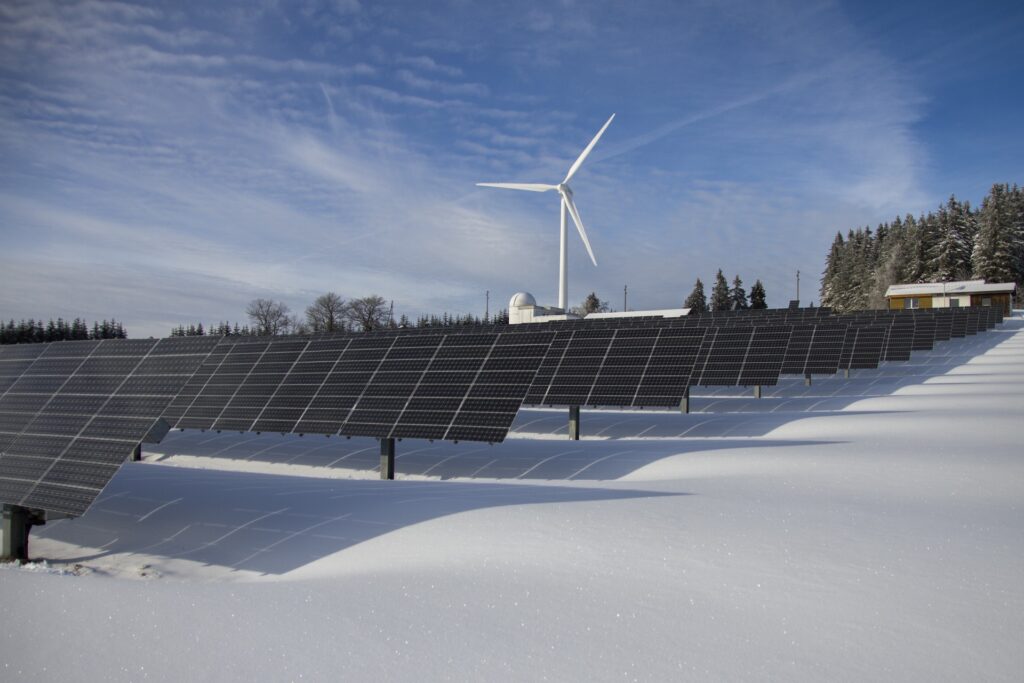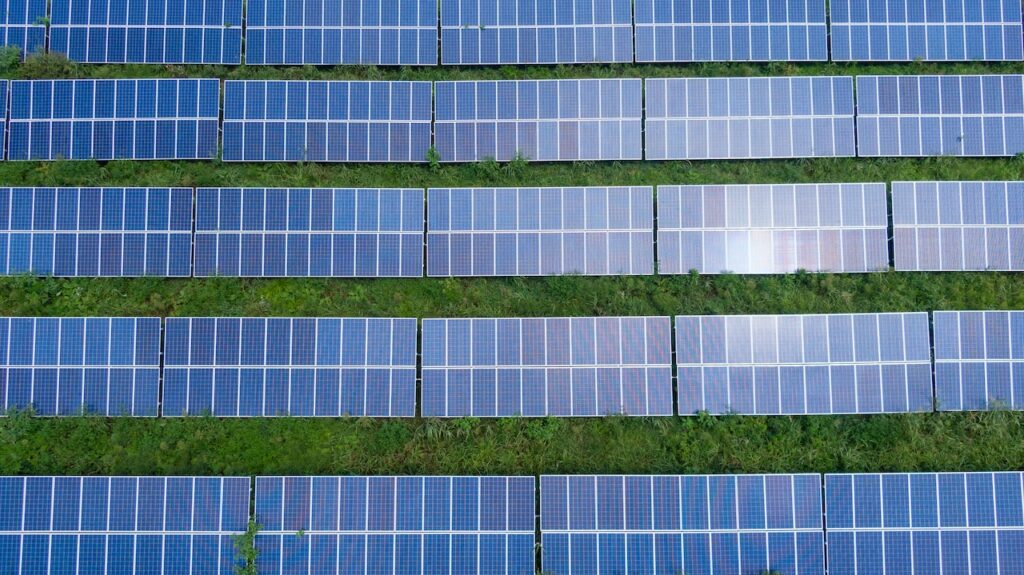Renewable Energy

Renewable energy, also known as clean energy, refers to energy sources that are considered environmentally friendly, renewable, and sustainable. Unlike traditional energy sources such as coal, oil, and natural gas, renewable energy sources are replenished naturally and do not produce harmful emissions or contribute to climate change. Renewable energy refers to energy that is produced from renewable and sustainable sources, such as wind, solar, water, geothermal, and biomass, which have a lower environmental impact and do not deplete finite resources. It is also referred to as clean energy, as it produces little to no emissions that contribute to climate change and air pollution.
Renewable energy sources include:
1. Solar Energy: Energy generated from the sun’s radiation using solar panels.
2. Wind Energy: Energy generated by wind turbines that convert the kinetic energy of wind into electrical energy.
3. Hydro Energy: Energy generated by the movement of water, such as through hydropower dams, water mills, or tidal power systems.
4. Ocean Energy: Ocean energy refers to the broad category of renewable energy derived from the various sources found in the ocean environment.
5. Geothermal Energy: Energy generated by heat from the Earth’s core.
6. Biomass Energy: Energy generated from organic materials, such as wood chips, agricultural waste, and biofuels.
Renewable energy is becoming increasingly important as the world strives to reduce its dependence on non-renewable energy sources and reduce its carbon footprint. In addition to being environmentally friendly, renewable energy is also often more cost-effective in the long run, as the costs associated with extracting and refining traditional energy sources continue to rise.
Geothermal energy

Geothermal energy is a type of renewable energy that comes from heat generated within the Earth’s crust. This heat can be harnessed through wells or boreholes drilled into the ground to access hot water or steam. The hot water or steam can then be used to power turbines and generate electricity, or for direct heating or cooling in homes, buildings, and industrial processes.
Geothermal energy is a reliable and sustainable source of energy, as it is not dependent on weather conditions like hydropower, solar, or wind power. It also has a smaller land footprint than many other energy sources, as geothermal plants can be built underground. However, geothermal energy can only be accessed in areas with high levels of geothermal activity, such as near volcanoes or hot springs.
Hydroenergy

Hydroenergy, also known as hydroelectric power, is a form of renewable energy that harnesses the energy of moving water to generate electricity. This is done by constructing a dam on a river or other water source to create a reservoir and then using the flow of water to turn turbines and generate electricity.
Hydroenergy is a reliable and relatively cheap source of energy, as the source of energy, water, is free and abundant. It is also a clean source of energy, as it produces no emissions or pollutants during operation. However, the construction of hydroelectric power plants can have negative impacts on the environment, including altering the flow of water, changing river ecosystems, and impacting fish populations. Additionally, hydroelectricity is only available in areas with sufficient water resources and topography suitable for constructing dams.
New ways of making use of the power of rivers and streams to generate electricity make it easy to generate electricity without too much impact to the environment or ecosystems. This is an area of power generation that is least exploited, so there is a lot of capacity to take advantage of to generate electricity.
Ocean Energy

Ocean energy refers to the broad category of renewable energy derived from the various sources found in the ocean environment. It encompasses both marine energy and offshore wind energy. Ocean energy refers to any energy source that is harnessed from the ocean, regardless of the specific mechanism or technology used. Marine energy, on the other hand, refers specifically to the subset of ocean energy that is derived from the various renewable sources found within the marine environment, excluding offshore wind energy. It focuses on harnessing the power of tides, waves, currents, and temperature gradients to generate electricity or perform other useful tasks.
Solar energy

Solar energy is a form of renewable energy that harnesses the energy of sunlight to generate electricity. This is done using solar panels, which are made up of photovoltaic cells that convert sunlight into direct current (DC) electricity.
The DC electricity produced by solar panels is then converted into alternating current (AC) electricity using an inverter, which can be used to power homes, businesses, and other electrical devices. Solar energy can also be stored in batteries for later use when sunlight is not available.
Solar energy is a clean and abundant source of energy, as it produces no emissions or pollutants during operation and is available virtually everywhere. The cost of solar energy has also decreased significantly in recent years, making it increasingly affordable for homes and businesses. However, solar energy is dependent on sunlight, which can be limited in some areas, and the efficiency of solar panels can be affected by factors such as weather, shading, dust, and temperature.
Wind energy

Wind energy is a form of renewable energy that harnesses the kinetic energy of wind to generate electricity. This is done using wind turbines, which are large towers with blades that rotate when the wind blows.
The rotation of the blades generates mechanical energy, which is then converted into electricity using a generator. The electricity generated by wind turbines can be used to power homes, businesses, and other electrical devices.
Wind energy is a clean and abundant source of energy, as it produces no emissions or pollutants during operation and is available in many parts of the world. The cost of wind energy has also decreased significantly in recent years, making it increasingly affordable for homes and businesses. However, wind energy is dependent on wind speed and consistency, which can be variable and unpredictable in some areas.
Biomass energy

Biomass energy is a form of renewable energy that comes from organic materials, such as plants, crops, and wood waste. This organic material can be burned to produce heat, which can then be used to generate electricity, power vehicles, or provide heating and cooling for homes and buildings.
Biomass energy can also be converted into a liquid fuel, such as ethanol or biodiesel, which can be used as a substitute for gasoline or diesel in vehicles. Additionally, biogas can be produced by decomposing organic waste in anaerobic digesters, which can then be burned to produce electricity or heat.
Biomass energy is a renewable and carbon-neutral source of energy, as the carbon dioxide emitted during combustion is offset by the carbon dioxide absorbed by the plants during growth. However, the use of biomass energy can have negative impacts on the environment, such as deforestation and air pollution from burning, and it can compete with food production for land and resources. The sustainability of biomass energy depends on the responsible management of the resources used to produce it. Biomass energy is less clean than energy from the sun, wind, earth, and water. So, we must give more emphasis to other forms of renewable energy first to extract and use to meet our electricity needs.
Lightening

Lightning, which is a natural electrical discharge that occurs during thunderstorms.
This is the least exploited energy source, as it is dangerous and destructive.